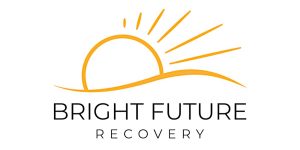Drug and Alcohol Detox
Freedom from Addiction Starts Here
Our goal at Bright Future Recovery is to create a safe, comfortable and nurturing environment during drug detox. This helps minimize the impact of long term detox withdrawals and its associated symptoms. To align with this approach, our medical detox center sits on a gorgeous acre in Northern California, surrounded by green hills. Having a home-like environment during drug detox is crucial for healing the mind, body and spirit. Statistics have shown that people who receive medical treatment in a residential-like setting recover faster.
Have questions about our detox program? Please contact us.
Are you or a loved one struggling with drug or alcohol abuse?
Call Bright Future Recovery Now
Confidential Consultations and Insurance Verification
Detox | Residential Rehab | Virtual IOP Outpatient Rehab | Relapse Prevention
What Is Medical Detox?
Medical detox is the very first step of the recovery process for those who face drug and alcohol addiction. The detox process involves allowing the body to rid itself of toxins that have built up as a result of substance abuse. During this process, clients experience withdrawal symptoms, which consist of physical and psychological reactions due to the cessation of substance use.
Why Medical Detox Treatment Is Important
Medical detox programs are an important part of the addiction recovery process for many people. Detox programs are the first step in a rehabilitation program and are essential to the success of alcohol and drug recovery. Those who take part in medically assisted detox programs often have an easier time with their recovery and more success in their prolonged sobriety.
Those struggling with chemical dependency fare better when receiving the benefits of a professional California rehab tailored to their needs. While larger, institutionalized facilities risk missing the nuances that make detoxing personal, Bright Future Recovery offers specialized medical detox program to ensure a truly individual and comprehensive detox.
Process of Medical Detox Centers
The specifics of each detox process depend largely on the detox program and the needs of each client. Most medical detox programs are split into three different steps: evaluation, stabilization, and preparation.
Evaluation
The evaluation process is designed to help health professionals develop a personalized treatment plan for clients going through the detoxification process. A physician will determine the proper medical treatment plan for a particular client, often by utilizing a physical exam, blood tests, and an evaluation of any other medical conditions present. A therapist may have clients complete a questionnaire to determine their psychological state and screen for any potential co-occurring mental health disorders, as well as to inquire as to the client’s support system.
Stabilization
After the evaluation phase of medical detox comes the stabilization stage. During stabilization, clients cease the consumption of addictive substances like drugs and alcohol while being closely monitored by health professionals. At times, physicians overseeing the detox process may find it necessary to administer medications that work to ease withdrawal symptoms. The stabilization process varies in length, typically lasting between one to three weeks.
Preparation
The last step of the detox process is the preparation stage. While medical detox addresses the physical symptoms of withdrawal, the psychological symptoms of recovery continue to be a challenge for clients even after illicit substances are no longer present in the body. We encourage clients to enter our treatment programs. This includes inpatient treatment, outpatient drug rehab treatment, 12-step programs, and other long-term rehabilitation solutions.
Medical detox may be accompanied by individual and group therapies, which continue throughout the recovery process and help prevent relapses.
How Long Does Drug Detox Treatment Take
The length of medical detox programs varies depending on client needs. After the completion of a medical detox program, clients move on to either inpatient or outpatient recovery programs which address their behavioral health and assist in learning coping skills and avoiding triggers to prevent relapses down the line.
In general, most individuals receive treatment at our detox centers for 7 to 10 days, though some warrant longer stays. Regardless of how long your stay is, we are confident you will find our beautiful home and breathtaking property a soothing component of the alcohol or drug detox process. Removal from the stresses of everyday life while surrounded by the beauty of nature in the Central California countryside is beneficial for recovery from addiction.
Withdrawal Symptoms of Detox
Symptoms of withdrawal from some substances can be life-threatening, which necessitates the use of medical detox programs. While in a medical detox centers, clients are supervised by health professionals who may utilize medications and other techniques to reduce withdrawal symptoms.
Depending on the drug addiction, individuals may experience the following detox withdrawal symptoms:
- Delirium tremens
- Shakiness
- Nausea
- Vomiting
- Anxiety
- Dizziness, and more
Withdrawal symptoms vary from person to person, depending on a number of factors, including:
- Type of substance being abused
- Length of substance abuse
- Frequency of use
- Gender, height, weight, and other physical features
- Medical history
- Co-occurring disorders
How to Pay for Rehab?
One of the easiest ways to cover the cost of a medical detox program in California is by utilizing your health insurance coverage. Medical detox is covered by many insurance programs. Contacting your insurance directly is a great way to find out exactly what type of rehabilitation programs are covered under your particular insurance plan and can provide you with direction when looking for the right program for your needs.
Final Thoughts about Medical Detox Programs
Medical detox programs are a great first step when it comes to substance abuse treatment. Bright Future Recovery detox helps clients start off their rehabilitation journey on the right foot, with a clear head and in better health. Medically assisted detox can be incredibly beneficial for the success of most clients.
Have questions about our detox program? Please contact us.
Are you or a loved one struggling with drug or alcohol abuse?
Call Bright Future Recovery Now
Confidential Consultations and Insurance Verification
Detox | Residential Rehab | Virtual IOP Outpatient Rehab | Relapse Prevention
Effects of Alcoholism and Detox
Once alcohol reaches the brain, it has an immediate intoxicating effect.
The drinker loses personal inhibitions as blood alcohol levels rise, so much so, that consciousness can be lost, also referred to as blackout. Once the need for alcohol consumption has escalated, the next drink becomes the primary source of mental focus—putting every other aspect of livelihood at risk.
Symptoms of alcoholism include slurred speech, incoordination, loss of control in bodily movements, memory loss, respiratory depression, coma, liver failure, esophageal varices (bleeding from the esophagus), and death.

Malnutrition is a big factor in alcoholism due to a decrease in nutrient intake. A person suffering with alcohol use disorder will choose drinking over food, known as primary malnutrition. Digestion impairment and malabsorption of nutrients cause secondary malnutrition. Eventually, tertiary malnutrition results, inhibiting the ability to convert nutrients (including vitamins A, B, D, E, K) and fat absorption, adversely affecting brain and body system health.
What Are Delirium Tremens, or DTs?
Delirium tremens usually appears 48 to 72 hours after the last intake of alcohol. DTs commonly seen in clients who have withdrawal seizures, acute mental illness, liver failure and older age.
Symptoms include:
- Confusiom
- Severe anxiety
- Hallucinations
- Profuse sweating
- Seizures
- High blood pressure
- Racing and irregular heartbeat
- Severe tremors
- Low-grade fever
What Is the Detox Process for Alcohol?
Alcohol detox can begin as early as two hours after the last drink and require up to a two-week stay. Alcohol detox symptoms can range from mild anxiety and shakiness to severe complications, such as seizures and delirium tremens (DTs).
Common detox withdrawal symptoms include shaky hands, sweating, mild anxiety, nausea, vomiting, headaches and insomnia.
Once drinking intake has stopped, some clients may experience visual, auditory, or tactile hallucinations within the first 12 to 24 hours and usually end by 48 hours. However, alcohol detox isn’t a completely predictable process which is why it’s important to engage in medically-supervised detox, as there is a very high mortality rate.
Withdrawal seizure disorders are more common in those clients who already have a preexisting seizure disorder. The seizures usually can be seen within 24 and 48 hours after the last drink. The risk level goes up for those clients who have gone through multiple detoxifications which can be common as alcoholism is a recurring disease.
Opiate/Opioid Detox
Opioids are drugs that are used to treat pain. Examples of opioids are codeine, heroin, hydrocodone (Vicodin), hydromorphone (Dilaudid), methadone, demerol, morphine, and oxycodone (Percocet, OxyContin).
Symptoms from detox usually start within 12 hours of last use, which can include agitation, anxiety, muscle aches, insomnia, runny nose, sweating and yawning.
Late symptoms include abdominal cramping, diarrhea, dilated pupils, goose bumps, nausea and vomiting.

What Is the Detox Process for Opioids?
We have a 7 to 10 day detox program. Medications are given on a taper system, and dosage is determined by a licensed physician. The length of detox is determined upon by appointment.
Medications that may be given include:
- Methadone – Strictly used to detox heavy methadone use. The dose is slowly decreased until the client no longer needs the medication.
- Hydroxyzine – Helps reduce anxiety symptoms.
- Subutex – Used to reduce anxiety, agitation, muscle aches, sweating, runny nose, yawning and cramping.
- Ambien – Short-term use to aid with sleep during detox.
We also encourage taking Epsom salt baths to help aid in muscle relaxation. Melatonin and valerian root may be given to help the client sleep.
CNS Drug Detox
CNS stimulant drugs include amphetamines (such as ecstasy), bath salts and cocaine. These drugs increase activity in the brain heightening energy and alertness.
As an individual takes the stimulant drug for a long period of time, the brain becomes dependent on the drug to regulate cognitive function and focus.
Symptoms of stimulant drug withdrawal include palpitations, feeling of impending doom, tachycardia (high heart rate), hypertension (high blood pressure), irregular heartbeat, heart attacks, agitation, combativeness, confusion, hallucinations, paranoia, aggression and suicide attempts.
As the drug wears off, signs of depression, exhaustion, irritability and sleeplessness set in.

What Is the Detox Process for Stimulants?
We have a 7 to 10 day detox for stimulants. The detox process may last several hours to several days.
- On Days 1-3, the client will start to crave the drug and have trouble sleeping. Heavy users may start to experience hallucinations, paranoia and panic.
- On Days 4-10, withdrawal symptoms start to decrease however the cravings increase. Extreme fatigue and severe depression may start to become present.
- On Days 11-17, symptoms begin to lessen.
Please note that depression may last days to months once detox is complete.
Other meds that may be given include, but are not limited to:
- Anti-seizure – Diazepam
- Antidepressants – per MD recommendations
- Antianxiety – Lorazepam
- Blood pressure – Clonidine
Vital signs will be closely monitored, as detox from stimulants is best under the supervision of detox professionals. A taper method using Suboxone may be used to help lessen the withdrawal symptoms as recommended by a medical physician.
Sedative Detox
Sedatives depress or slow down the central nervous system. Examples include barbiturates, benzodiazepines (such as diazepam), hypnotics and sleeping aids.
The signs of sedative withdrawals include: restlessness, muscle shaking, excessive sweating, nausea, vomiting, insomnia, depression and anxiety. In some cases, the user experiences hallucinations, delirium and potentially fatal seizures.
Detoxing length can vary depending on the drug being taken, as each one has a different half-life (the time is takes to leave the body). Some symptoms may begin at about 7 days and can last as long as a month or longer.

What Is the Detox Process for Sedatives?
The client will meet with the MD to determine the medication used and the dosage for tapering.
We plan to keep the client as safe as possible during this time. All medications prescribed are through a licensed physician and are closely monitored by a Registered Nurse.
The safest way to detox off sedatives is to taper the client gradually. It gives the body a chance to adjust to the lower levels present in the system and decreases the risk of complications (namely, seizures) that may be brought on by going “cold turkey”.
Life After Detox Treatment at Our Detox Center
Once the physical and emotional effects of drug detox have subsided, it is time to begin the road to recovery. First, however, it is essential to address which unique emotional and behavioral aspects contributed to the development of your addiction.
Before beginning residential rehab treatment, our trained staff will perform a comprehensive evaluation of your overall health, which may have changed during your recent detox residential long term experience. In addition, we will perform a personalized assessment of any familial or environmental components to your addiction. The information gathered will provide valuable insights into your treatment program moving forward.
It is common for individuals suffering with addiction to experience coexisting conditions such as depression, anxiety, or bipolar disorder. Our professional addiction rehab staff has experience in treating these kinds of coexisting disorders alongside alcohol or drug treatment to ensure that we identify and manage all parts of your emotional and psychological well-being. We work diligently to craft a treatment program that addresses your unique needs.`
Have questions about our aftercare programs? Please contact us.
Call Bright Future Recovery
Confidential Consultations and Insurance Verification
Detox | Residential Rehab | Relapse Prevention
We accept most insurance – Free Insurance Benefits Check.
Frequently Asked Questions
When a person abstains from consuming a drug of choice or alcohol in an attempt to rid their body completely of that substance, this is the process of detox.
A drug detox refers to a procedure in which the client tapers off the drug or alcohol addicted to until it is no longer in the system.
Substance abuse not only alters the mind of a person but also leads to a physical tolerance that can be dangerous if not monitored and handled correctly. Our recovery prep program offers clients a warm, comfortable setting to get through alcohol and drug detox safely.
Related Reading:
The need for medical detox is determined on a case-by-case basis when entering into a rehabilitation program. However, most clients will need some type of assistance through the detox process. Those with less severe substance abuse issues may be able to take part in outpatient detox programs. However, clients with severe addiction issues need to attend inpatient detox programs, where medical intervention is available on a consistent basis.
Medically assisted detox is highly recommended for those dealing with the abuse of substances such as:
- Alcohol
- Prescription stimulants like Adderall
- Non-prescription stimulants such as methamphetamine or cocaine
- Opioids like heroin, oxycodone, and hydrocodone
- Benzodiazepines such as Ativan, Valium, and Xanax
- Synthetic drugs including bath salts, Spice, and K2
Withdrawal symptoms from certain substances are life-threatening, and detoxification should not be attempted without the assistance of a medical professional. Allowing the body to rid itself of toxins helps clients start their rehabilitation journey with a clear mind and healthier body, aiding in the recovery process.
Physical withdrawals of drugs and/or alcohol can be overwhelming and very uncomfortable for the addict. These symptoms differ depending on the substance, and have the potential to be lethal if not properly supervised by addiction professionals.
Bright Recovery Future will take all measures possible to ensure that any pain experienced will be as minimal as possible, and will discuss with you any recommended pain management techniques to help.
We usually try to limit family contact during the detox process and let the clients take this time to themselves. That being said, we can update families on their loved ones’ progress during the detox stage. After detox, clients will have more opportunities to communicate and interact with their families.
Make note that we almost always solicit the family’s input prior to starting treatment with a new client – to help us customize his or her recovery plan. We see addiction recovery as a family-wide process, so their involvement is paramount.
The cost of any rehabilitation services is likely to vary greatly from program to program. The best way to determine the cost of a medical detox program is to contact the detox center directly and ask. Detox programs typically do their best to be cost-effective for all clients, even those without insurance.
Paying for Medical Detox with Insurance
One of the easiest ways to cover the cost of a medical detox program is by utilizing your health insurance coverage. Medical detox is covered by many insurance programs. Contacting your insurance directly is a great way to find out exactly what type of rehabilitation programs are covered under your particular insurance plan and can provide you with direction when looking for the right program for your needs.
Covering Medical Detox Programs Without Insurance
Those who lack insurance can also take advantage of medical detox programs. Finding the funds to cover your medical detox may seem intimidating, but many programs are willing to work with their clients and provide payment plans to those who are covering services out of pocket. Another great asset to consider when determining how to pay for treatment is your external support system. Friends and family are often willing to provide help when it comes to receiving much-needed treatment for substance abuse issues.
We have a 7 to 10 day detox program. Medications are given on a taper system, and dosage is determined by a licensed physician. The length of detox is determined upon by appointment.
Medications that may be given include:
- Methadone – Strictly used to detox heavy methadone use. The dose is slowly decreased until the client no longer needs the medication.
- Hydroxyzine – Helps reduce anxiety symptoms.
- Subutex – Used to reduce anxiety, agitation, muscle aches, sweating, runny nose, yawning and cramping.
- Ambien – Short-term use to aid with sleep during detox.
We also encourage taking Epsom salt baths to help aid in muscle relaxation. Melatonin and valerian root may be given to help the client sleep.
We usually try to limit family contact during the detox process and let the clients take this time to themselves. That being said, we can update families on their loved ones’ progress during the detox stage. After detox, clients will have more opportunities to communicate and interact with their families.
Make note that we almost always solicit the family’s input prior to starting treatment with a new client – to help us customize his or her recovery plan. We see addiction recovery as a family-wide process, so their involvement is paramount.
We are partnered with a licensed doctor who can prescribe medication, if needed, to help allay the discomfort of withdrawal and to help the client come off drugs safely. We also have a registered nurse and other medical experts on staff to help with the other areas of care needed during the detox period.
Location and Directions
Bright Future Recovery also owns and operates Avila Heights Recovery.
Avila Heights Recovery is our luxury executive rehab in San Luis Obispo.








